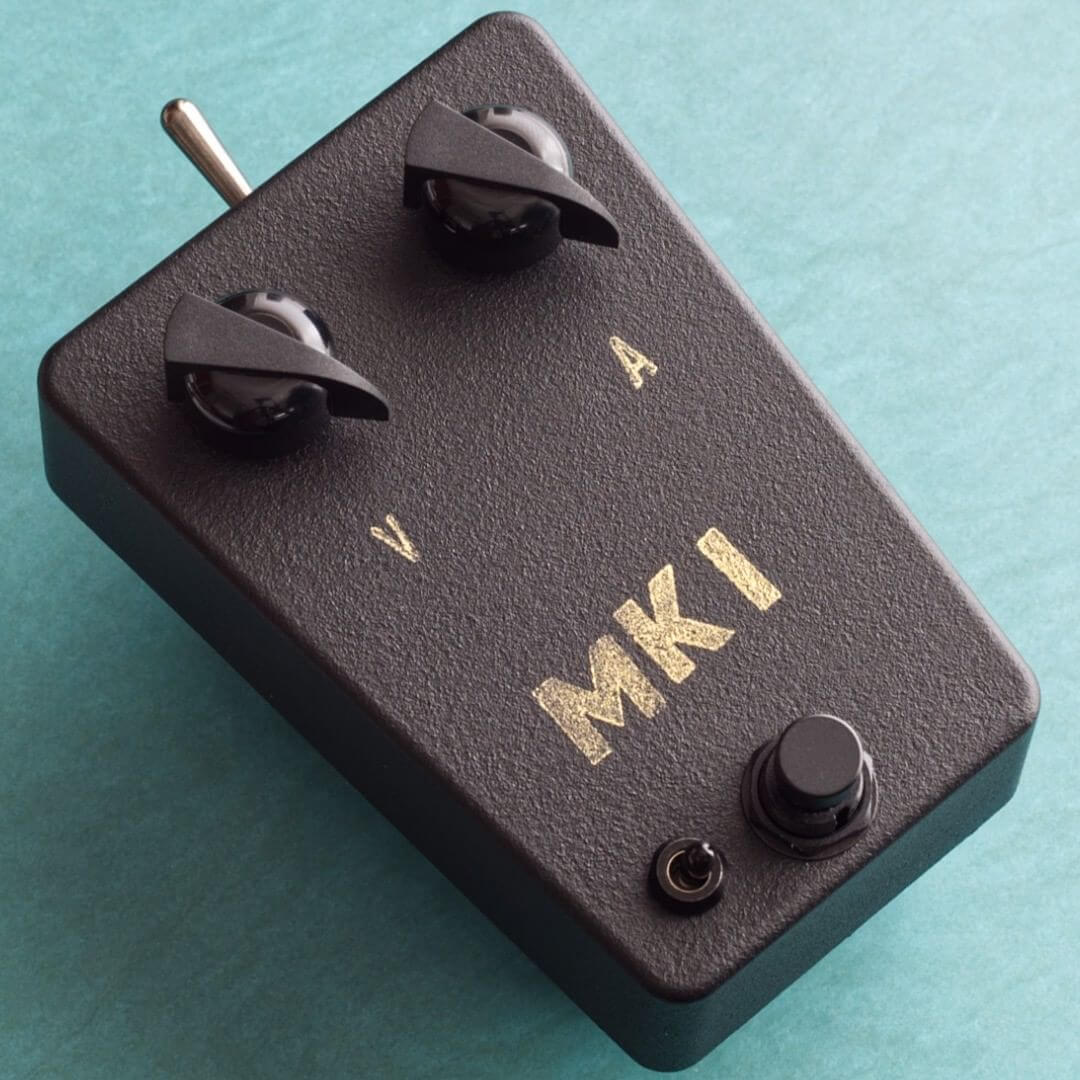Build - Pedal Project: Tonebender MK1
Originally built on hand-drilled phenolic board, the original build style of the Tonebender Mk1 is messy and primitive, but it has its own charm. If you’d like to build a Mk1 in the traditional style, we offer an FR4 board with the original layout (P-PC-BEND-MK1) and have a layout drawing in the Files section of that listing.
This layout is inspired by the original, but designed for more standard turret board and eyelet board types. It also moves the 1k8 resistor onto the board, whereas in originals it was wired offboard to the attack pot. There is also a 1M pulldown resistor at the input to prevent pops and clicks when the effect is engaged. Leave the far left 1M resistor out to keep it original.
The Mk1 can be picky about which transistors are used. Three OC41s are included in the BoM below, but you may need a larger batch of transistors you can try out in the circuit. The “Attack” control changes the bias of Q2. There is often a sweet spot on the control where the pedal sounds best, and there is a little more wiggle room on Q2 since it can be dialed in with the Attack control.
Q1 needs some leakage current for that stage to function. If the signal coming out of the emitter of Q1 is weak or silent, it is probably not a leaky enough transistor. A leakier transistor would fix the issue, or you can connect a resistor from the collector of Q1 to its base. This allows for additional current to flow from the collector into the base of the transistor, simulating transistor leakage. It is best to start with a large value resistor (e.g. 1M5) and decrease it from there until the output from Q1 is strong. A smaller resistor results in more simulated leakage. The less leakage the transistor has, the smaller the resistor needs to be.
This is a PNP build and uses battery power only. With no LED indicator, this pedal will last a very long time on battery power. If you would like to build this pedal with a DC jack, please see our PNP "Positive Ground" Pedal Considerations tech article.
See Figure 4 in our Guitar Pedal Footswitch and Jack Wiring article for the recommended footswitch and I/O wiring.
Parts List
| Value | Qty | SKU | Type |
|---|---|---|---|
Capacitors | |||
| 100 nF | 2 | C-MKT-D1-400 | Film Cap |
| 10 nF | 1 | C-MKT-D01-400 | Film Cap |
| 25 µF | 1 | C-ET25-50-MOD | Electrolytic |
Potentiometers | |||
| 500k Audio | 1 | R-VAM500KA-SS | Volume Control |
| 50k Linear | 1 | R-VAM50KL-SS | Attack Control |
Resistors | |||
| 15 kΩ | 1 | R-I15K | Carbon Comp Resistor |
| 1.8 kΩ | 1 | R-I1D8K | Carbon Comp Resistor |
| 1 MΩ | 2 | R-J1M | Carbon Comp Resistor |
| 2.2 kΩ | 1 | R-I2D2K | Carbon Comp Resistor |
| 2.2 MΩ | 1 | R-J2D2M | Carbon Comp Resistor |
| 470 kΩ | 1 | R-I470K | Carbon Comp Resistor |
| 47 kΩ | 1 | R-I47K | Carbon Comp Resistor |
| 8.2 kΩ | 2 | R-I8D2K | Carbon Comp Resistor |
Semiconductors | |||
| OC41 | 3 | P-Q2N404 | Germanium transistor |
Other Items | |||
| 2x8 | 1 | P-HTB-2x8 | Board |
| Black 1590TRPB | 1 | P-H1590TRPBBK | Enclosure |
| Black 3PDT | 1 | P-H501-L-BLK | Footswitch |
| Dress nut | 1 | P-H54-DRESS-BLK | Zonk switch dress nut |
| Greencell 9V | 1 | S-9V-GCELL | Battery |
| Rigid battery snap | 1 | P-BATC-SN-1S | Battery snap |
| Mini toggle | 1 | P-H5410 | Zonk switch |
| Mono jack | 1 | W-SC-111X | Output jack |
| Phenolic chickenhead knob | 2 | P-K460 | Knob |
| Stereo jack | 1 | W-SC-112BX | Input jack |
| Switch cap | 1 | P-HTCAP-SH-B | Zonk switch cap |





